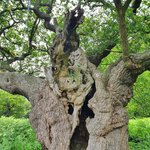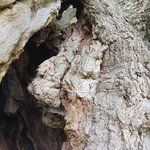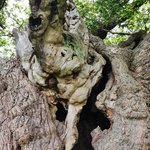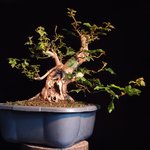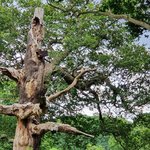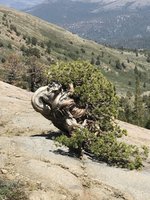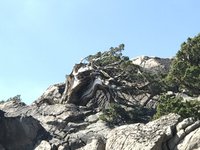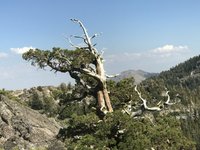SU2
Omono
Here in FL, the "makes sense to grow" species are most often broadleafs not conifers (unless you count BC's) so that's what I've got, and I've used burnishing & l.sulfur for treating deadwood (I work with yama/yardadori almost exclusively, and almost always larger specimen -- so lots of deadwood in my collection)
I didn't really notice it til this year, just how much BETTER the deadwood jins/shari's were on my BC's, than on any other specie in my garden (ie of like several dozen deadwood accents in the nursery, the only handful that didn't need touching-up were the ones on BC's, the rest all needed annual treatment IE grind-back to clean wood and re-treat the deadwood)
It was when I was reading a scholarly-level book on trees that i learned that "Coniferous trees are said to have 'Non-Porous' wood, because their wood(xylem) lacks the Vessels that are part of broadleaf xylem/wood, conifers simply have tracheids, fibers & parenchyma cells -- not those plus Vessels like broadleafs" Reading that I was hit with "well there it is, maybe this 'Only conifers should have deadwood' thinking is based on aesthetics for most, but the ROOT reason is probably the simple fact that coniferous deadwood lasts, being non-porous, whereas broadleaf does-not"
Thanks a ton for any insight/understanding here, would love @M. Frary 's thoughts because I know you've read the book I'm reading (ISA's arb cert study guide), but yeah I have scores of bougies/crapes/maples/ficus with deadwood accents, IF fungi can penetrate this in a way they cannot on conifers then I suspect I've doomed all those deadwood accents and, instead of "cleaning & re-sealing" I should do-away with all of them post-haste :/
I didn't really notice it til this year, just how much BETTER the deadwood jins/shari's were on my BC's, than on any other specie in my garden (ie of like several dozen deadwood accents in the nursery, the only handful that didn't need touching-up were the ones on BC's, the rest all needed annual treatment IE grind-back to clean wood and re-treat the deadwood)
It was when I was reading a scholarly-level book on trees that i learned that "Coniferous trees are said to have 'Non-Porous' wood, because their wood(xylem) lacks the Vessels that are part of broadleaf xylem/wood, conifers simply have tracheids, fibers & parenchyma cells -- not those plus Vessels like broadleafs" Reading that I was hit with "well there it is, maybe this 'Only conifers should have deadwood' thinking is based on aesthetics for most, but the ROOT reason is probably the simple fact that coniferous deadwood lasts, being non-porous, whereas broadleaf does-not"
Thanks a ton for any insight/understanding here, would love @M. Frary 's thoughts because I know you've read the book I'm reading (ISA's arb cert study guide), but yeah I have scores of bougies/crapes/maples/ficus with deadwood accents, IF fungi can penetrate this in a way they cannot on conifers then I suspect I've doomed all those deadwood accents and, instead of "cleaning & re-sealing" I should do-away with all of them post-haste :/

 The royal oak, estimated 750 years old
The royal oak, estimated 750 years old